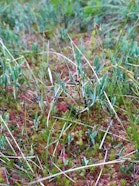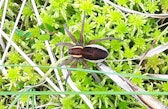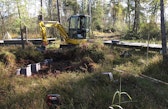Regenerating raised bogs efficiently and effectively
Project Update
Publish date: February 17, 2025

Regenerating raised bogs efficiently and effectively
Regenerating raised bogs efficiently and effectivelyRegenerating raised bogs efficiently and effectively
Project Update
Regenerating raised bogs efficiently and effectively
Regenerating raised bogs efficiently and effectivelyPublish date: February 17, 2025
Fens are often located in the catchments of raised bogs. Drainage structures usually run through the entire area and cause hydrological disturbances in the peatland soils. By locating these drainage ditches, we can identify and prioritize those that severely impair the water balance, and on that basis regenerate the affected fen and raised bog areas.
While expert opinions differ on the best approaches to peatland regeneration, an evaluation of completed projects has assessed the appropriateness and effectiveness of the selected regeneration measures in eight peatlands. Based on this, experts will formulate best practice recommendations and identify gaps in research.
Progress on restoring peatlands in Switzerland has been slower than desired, partly due to a lack of peatland experts. This is set to change, thanks to a new CAS course in peatland ecology (taught in German and French), which was launched in 2024 and has met with great interest. The course was developed by the Zurich University of Applied Sciences (ZHAW) and the Haute école du paysage, d'ingénierie et d'architecture de Genève (HEPIA), with financial support from the Federal Office for the Environment (FOEN) and the Wyss Academy. Bern’s peatlands will be used as case studies for the students, and the knowledge gained can in turn be incorporated into new regeneration projects.
Additional Information:
Moore (Information about peatlands on the website of the Canton of Bern; available in German and French)
CAS Moorökologie (Description of CAS course in peatland ecology on HEPIA’s website; available in German and French)
In collaboration with:
Office for Agriculture and Nature of the Canton of Bern (LANAT)


Team
- Project contactProject contact
Julia Dietrich
Scientific Collaborator
